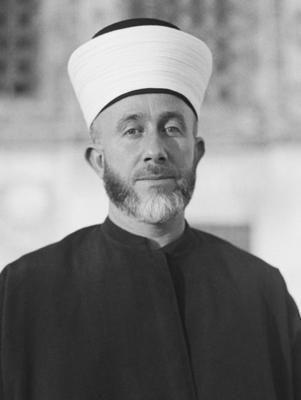Following World War I and the dismantling of the Ottoman Empire, the League of Nations divided “Greater Syria” into two parts: The southern half (known as Palestine) was mandated to Great Britain and the northern part (modern Lebanon and Syria) was mandated to France. Insights into the contemporary tensions in Syria can be found by examining the legacies of some of the policies implemented by the French under mandate rule.
According to the principle of the mandate, an "advanced" state was expected to tutor a less-advanced state in the complexities of democratic self-government until the latter was prepared for self-rule. It was perceived as a liberal concept that differed from colonization, though in practice mandated powers tended to act in their own interests. For example, France implemented policies that led to social and political fragmentation in an effort to stem Sunni led Arab nationalist movements that might have jeopardized France’s interests in the region and in northern Africa.
Arab nationalist movements were also threatening for many of the religious and ethnic minorities who were concerned about the prospect of Sunni dominance. France helped to curry the favor of these groups by strengthening influence and autonomy among minorities concentrated in particular regions and by diffusing the power of majority Sunni populations. The Alawis (known as Nusayris before being formally renamed in the 1920s) were heavily concentrated in the mountain district behind Latakia and that region became a separate state under French rule. Similarly, the Jabal al-Druze region south of Damascus was heavily populated by the Druze and was also granted independent status under the umbrella of French protection.
Another strategy employed by the French was to concentrate religious and ethnic communities within different branches of the government. This was especially pronounced in the army and police forces where the French recruited in areas far from the urban centers where Arab nationalist sentiments were strongest. Several battalions were populated by Alawis who saw the military as a form of social and economic advancement. Though they were always a numerically significant minority under both Ottoman and French rule, they were economically marginalized due to their longstanding status as peasants to Christian and Sunni landowners. Conversely, most Sunni landowners and urban dwellers who were engaged in commerce were loathe to support what they perceived to be French imperial interests through military service and were economically advantaged enough to afford the redemption fee levied as an alternative.[1]
 A final critical legacy of French mandate rule was its role in influencing the formal recognition of the Alawi sect as legitimately Muslim through a fatwa issued in 1936 by the Sunni Grand Mufti of Jerusalem, Muhammad Amin al-Husayni. Prior to this declaration, most Sunni and Shi’a Muslims had considered the Alawis heretical since the time of their emergence in Iraq in the 9th century. This designation was formalized in a series of fatwas issued by the influential Sunni scholar Ibn Taymiyya in the 14th century.
A final critical legacy of French mandate rule was its role in influencing the formal recognition of the Alawi sect as legitimately Muslim through a fatwa issued in 1936 by the Sunni Grand Mufti of Jerusalem, Muhammad Amin al-Husayni. Prior to this declaration, most Sunni and Shi’a Muslims had considered the Alawis heretical since the time of their emergence in Iraq in the 9th century. This designation was formalized in a series of fatwas issued by the influential Sunni scholar Ibn Taymiyya in the 14th century.
In light of this long history of marginalization and often persecution, the significance of the 1936 fatwa recognizing the Alawis as legitimately Muslim cannot be overstated. There are several converging factors that led to this shift, but chief among them was the autonomy that the French granted the Alawis in the context of vigorous efforts by Arab nationalists to form coalitions against European rule.[2]
←Historical Legacies Independence & Modern Political Rule→
[1] Fildis, Ayse Tekdal. “Roots of Alawite-Sunni Rivalry in Syria,” Middle East Policy, Vol. XIX, No. 2 (Summer 2012), p. 8.
[2] Yvette Talhamy, “The Fatwas and the Nusayri/Alawis of Syria,” Middle Eastern Studies, Vol, 46, No. 2 (April 2010), pp. 189–190.
Image Credits:
"His Eminence the Grand Mufti of Jerusalem. Haj Amin Effendi el-Husseini (1929)," Library of Congress, from Wikimedia Commons.
